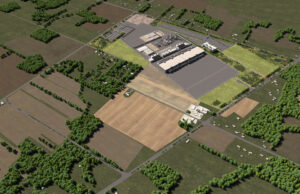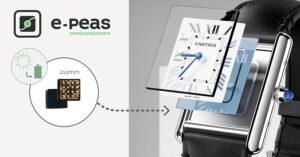
EDACafe Editorial Roberto Frazzoli
Roberto Frazzoli is a contributing editor to EDACafe. His interests as a technology journalist focus on the semiconductor ecosystem in all its aspects. Roberto started covering electronics in 1987. His weekly contribution to EDACafe started in early 2019. Intel new fabs in Ohio; stacked forksheet transistor; Nvidia-Arm updates; low power devicesJanuary 26th, 2022 by Roberto Frazzoli
The USA was definitely the center of the action last week with major announcements from Intel and Microsoft – spanning tech areas as diverse as fab construction and game development. Let’s start with Intel, while the Microsoft news can be found in our Acquisition paragraph. Intel to build two new fabs in Ohio Intel has announced plans for an initial investment of more than $20 billion in the construction of two new chip factories in Licking County, near Columbus, Ohio. In addition to providing capacity for Intel’s own products, these new factories will support the company’s new foundry business. The initial phase of the project is expected to create 3,000 Intel jobs and 7,000 construction jobs, and to support tens of thousands of additional local long-term jobs across the ecosystem. Spanning nearly 1,000 acres, the site can accommodate a total of eight fabs – as well as support operations and ecosystem partners. Intel stated that the total investment in the site could grow to as much as $100 billion over the next decade, making it one of the largest semiconductor manufacturing sites in the world. “The scope and pace of Intel’s expansion in Ohio, however, will depend heavily on funding from the CHIPS Act,” said Keyvan Esfarjani, Intel senior vice president of Manufacturing, Supply Chain and Operations. Construction is expected to begin late in 2022, while production is expected to come online in 2025. As part of Intel’s announcement, Air Products, Applied Materials, LAM Research and Ultra Clean Technology have indicated plans to establish a physical presence in the region. “The Columbus Dispatch” daily newspaper has a story on how Ohio won the bid by Intel. The article quotes a letter from Intel CEO Pat Gelsinger to the Ohio governor, saying “Ultimately, we hope to establish the largest semiconductor manufacturing site on the planet.”
Intel applies for “stacked forksheet” transistor patent Intel is in the news these days also because of a patent application that recently came to the media’s attention. Last December 30, the company applied for a patent for what it calls “stacked forksheet transistors”. The term “forksheet” has been used by Belgian research Institute Imec before, so the new architecture proposed by Intel seems to be an evolution of the Imec architecture aimed at reaching even higher density. The patent application also covers the fabrication method, pointing out that “structures described herein may be fabricated using a back-side reveal of front-side structures fabrication approach (…) Reveal techniques described herein may enable a paradigm shift from ‘bottom-up’ device fabrication to ‘center-out’ fabrication.” Nvidia reportedly preparing to abandon Arm acquisition According to Bloomberg, Nvidia is preparing to abandon its purchase of Arm from SoftBank Group. The report said that the GPU maker does not expect the deal to close, while SoftBank is stepping up preparations for an initial public offering (IPO) of Arm. AMD’s acquisition of Xilinx, instead, is progressing – but while the two companies expected to secure all approvals by the end of 2021, they now expect the transaction to close in the first quarter of 2022. MediaTek demos Wi-Fi 7 MediaTek is currently showcasing two Wi-Fi 7 demos to key customers and industry collaborators. According to the company, Wi-Fi 7 will mark the first time that Wi-Fi can be a true wireline/Ethernet replacement for super high-bandwidth applications. Wi-Fi 7 will deliver 2.4X faster speeds than Wi-Fi 6 – even with the same number of antennas – since it can utilize 320MHz channels and support 4K quadrature amplitude modulation (QAM) technology. Other notable features of Wi-Fi 7 include MLO (multi-link operation) to reduce latency by transmitting Wi-Fi on multiple bands, in addition to multi-user resource unit (MRU) features for enhanced interference avoidances and mitigation. Products with Wi-Fi 7 are expected to hit the market starting in 2023. MediaTek has also recently released a 39-page white paper detailing its vision of the future 6G mobile technology. The company anticipates the initial standardization effort in 3GPP to start around 2023/2024 with normative work from the turn of 2026/2027. Low power and energy harvesting updates: e-peas, Atmosic Belgian company e-peas has recently introduced what it claims is “the lowest power consuming Cortex-M0 MCU to be commercially available, drawing only 18µA/MHz while in active mode.” The microcontroller works at 24MHz and has an array of different sleep states, the lowest of which will take its current draw down to just 340nA (with its real-time clock running and 8kB SRAM retention). A multitude of different interfaces are embedded into the MCU (UART, I2C and I2S, plus numerous GPIOs), as well as data conversion and voltage regulation elements. More recently, e-peas has also announced it has created an ultra-compact custom power management solution for Cartier’s first solar energy harvesting watch. On average, these watches will run for a period of 16 years without having to change the rechargeable cell. According to the company, Cartier chose the e-peas solution because of its ability to harvest energy at low light levels, its minimal standby current and its dimensions (2mm x 2mm). Atmosic (Campbell, CA) has unveiled the ATM33 Series Bluetooth 5.3 family of SoCs, equipped with a 0.7mA receiver and a transmitter that can operate efficiently with output power from 0dBm to 10dBm. According to the company, these solutions provide 3-to-5x longer battery life compared to the competition. The ATM33 integrates an Arm Cortex M33F that can operate up to 64MHz and supports Arm TrustZone. Atmosic has also announced $72 million in new funding led by Sutter Hill Ventures. Acquisitions Microsoft has announced plans to acquire Activision Blizzard (Santa Monica, CA) – a leader in game development and interactive entertainment content publisher – to accelerate the growth of its gaming business across mobile, PC, console and cloud and to provide building blocks for the ‘metaverse’. Microsoft will acquire Activision Blizzard in an all-cash transaction valued at $68.7 billion. When the transaction closes, Microsoft will become the world’s third-largest gaming company by revenue, behind Tencent and Sony. The planned acquisition includes famous franchises like “Warcraft,” “Diablo,” “Overwatch,” “Call of Duty” and “Candy Crush,” in addition to global eSports activities through Major League Gaming. Activision Blizzard has studios around the world with nearly 10,000 employees. According to business intelligence firm CB Insights, this would be Microsoft’s largest acquisition ever. |
|
|
|||||
|
|
|||||
|
|||||








